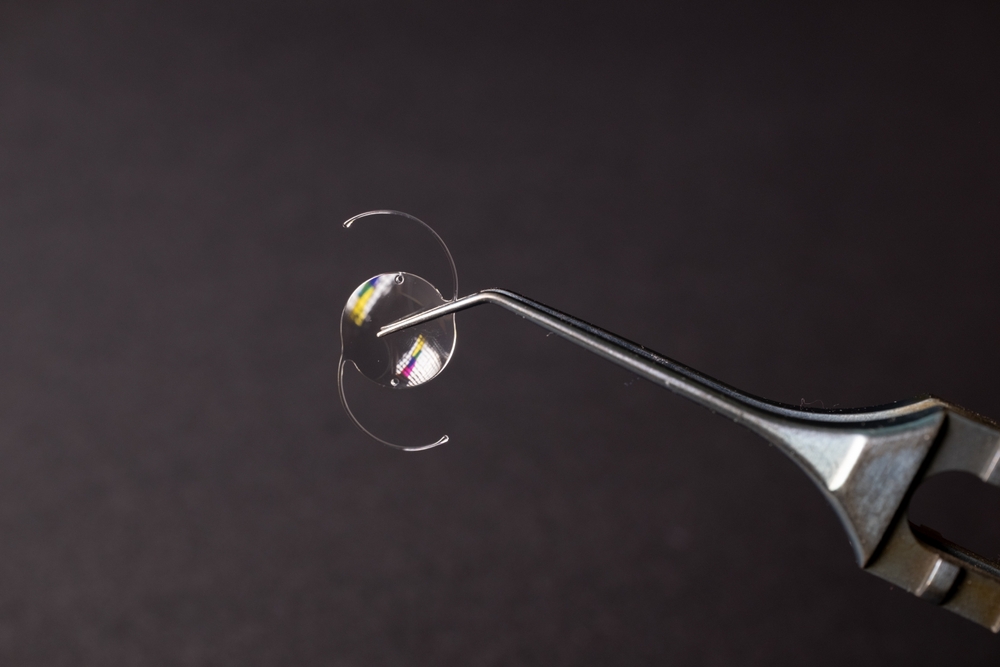What is Presbyopia and How Do Multifocal IOLs Address it?
January 17, 2024
If you are over forty, you may have noticed changes to your vision, particularly for activities like reading. Presbyopia is a common eye condition that is a natural part of the aging process within the eye that causes blurry near vision.
Most people with presbyopia use over-the-counter reading glasses to help combat the vision changes that come along with the condition. However, it can be inconvenient to rely on reading glasses for simple activities like checking your phone or reading a document.
Cataract surgery with multifocal intraocular lenses is one solution to presbyopia. This safe, effective procedure can improve your vision and reduce or eliminate the need for reading glasses.
Keep reading to learn more about multifocal IOLs and presbyopia!
What Is Presbyopia?
Presbyopia is the medical name for age-related difficulty with near vision. It's the reason people in middle age may find themselves holding restaurant menus or books at arm's length to see the print more clearly.
It's a natural part of aging and not a sign of significant eye disease. The cause of presbyopia is a hardening of the lens of the eye. 
This typically clear structure is designed to be flexible and change shape to focus light on the retina. The retina then interprets light as images.
The lens grows more rigid over time and cannot adjust its shape to properly focus on close objects. You can temporarily correct vision changes from presbyopia with glasses or contact lenses.
However, there are also surgical options that are more permanent. Because presbyopia occurs due to changes in the lens of the eye, corneal surgery like LASIK cannot correct it.
Instead, you can treat presbyopia during cataract surgery. If you have cataracts, you can replace your natural lens with an artificial lens that corrects your vision. The lenses are called intraocular lenses or IOLs.
Do you want to learn if multifocal IOLs may be able to help you?
Schedule a Cataract Evaluation
What Are Intraocular Lenses (IOLs)?
Intraocular lenses are clear, artificial lenses that replace the natural lens of the eye. IOLs are placed in the eye during cataract surgery, when the natural lens has become clouded and impairs vision.
IOLs are an option for vision correction in people who have refractive errors that require glasses or contacts. IOLs can correct a range of vision issues, including presbyopia.
Standard IOLs are monofocal lenses with a single focusing power. The lens will correct either your distance, mid-range, or close-up vision. This is not typically a solution for presbyopia, where distance vision is not affected.
An IOL to correct only close vision would mean you would need glasses for distance vision. In order to treat presbyopia effectively, a multifocal IOL is a better option.
What Are Multifocal IOLs?
Multifocal lenses contain multiple focal zones to allow for corrected distance, mid-range, and close vision, much like bi-focal or progressive glasses do. The brain adjusts to the focal zones and learns to choose the right focusing power automatically for the task at hand.
 Most people with multifocal lens implants do not require glasses for distance or reading. There is some risk of glare or a halo effect, and vision in low light may not be as sharp.
Most people with multifocal lens implants do not require glasses for distance or reading. There is some risk of glare or a halo effect, and vision in low light may not be as sharp.
This can be an issue for people who drive at night regularly and for some people who use computers a lot. Another IOL option is an extended depth-of-focus (EDOF) lens.
These IOLs offer one long focal point. This design expands your depth of focus and range of corrected vision.
EDOF lenses offer excellent distance and close-up vision corrections and improvement in mid-range vision, so you don't need glasses for tasks such as computer use. Accommodative lenses are another solution to presbyopia.
These IOLs are designed to physically adjust to change focus. They act similarly to the eyes' natural lenses by adjusting their shape to focus on either close-up or distant objects. Accommodative lenses can dramatically reduce dependency on glasses.
Do you want to learn if multifocal IOLs may be able to help you?
Schedule a Cataract Evaluation
How Do I Know Which IOL Is Right for Me?
Your choice of IOL depends on your goals for vision correction surgery and what your vision priorities are. You should consider questions such as:
- How often are you willing to wear glasses, or do you want to minimize the need for glasses as much as possible?
- When you are at work, do you need to use distance vision or near vision more often?
- Do you drive or work at night? Are you comfortable with glare or halos around lights while driving after dark?
If you want to minimize or eliminate your need for glasses, multifocal lenses may be the right choice for you. If you need sharper vision at night or don't mind wearing reading glasses occasionally, then an accommodative lens or EDOF lens may be a better choice.
Your eye doctor can help you determine the best IOL for you. Discuss your goals for vision correction surgery with your eye doctor at Center for Total Eye Care and they will help determine the lens most suitable for you.
Will I Have to Wear Glasses After Getting Multifocal IOLs?
Because multifocal lenses have correction for close and distance vision, most people who have them don't need to wear glasses anymore. You may find that it is more comfortable to wear reading glasses for extended close-up work or computer time.
However, you will most likely be able to read a restaurant menu without glasses and without holding it far away from your face.
If you are ready to get rid of reading glasses, the Center for Total Eye Care offers a wide array of premium IOL choices from trusted brands.
Do you want to learn more about how multifocal IOLs can help correct your presbyopia? Schedule a cataract evaluation at Center for Total Eye Care in Westminster or Eldersburg, MD, today!



